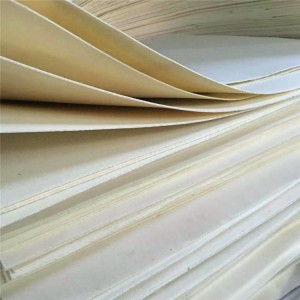In the global push towards a circular economy, wool felt strips are emerging as a key player, demonstrating how a simple material can contribute to reducing waste, promoting reuse, and enhancing sustainability. Their unique characteristics and versatility make them an ideal candidate for driving the principles of the circular economy forward.
One of the primary ways wool felt strips support the circular economy is through their recyclability. Unlike many synthetic materials, wool felt is biodegradable and can be recycled into new products. At the end of their life cycle, wool felt strips can be collected, processed, and transformed back into raw wool fibers. These recycled fibers can then be used to create new wool felt strips or other wool – based products, closing the loop and reducing the demand for virgin materials.
Many artisans and designers are already leading the way in using recycled wool felt strips in their creations. They source used wool felt products, such as old felted bags, hats, or craft projects, and repurpose them into new and unique items. For example, a designer might take worn – out wool felt scarves and cut them into strips to create a patchwork – style wall hanging. This not only gives new life to discarded materials but also adds a sense of history and character to the final product.
In addition to recycling, wool felt strips also encourage the concept of reuse. Their durability means that products made from wool felt strips can have a long lifespan. For instance, wool felt coasters, which are resistant to stains and wear, can be used for years, reducing the need for frequent replacements. Similarly, wool felt storage baskets made from strips can be used to organize items around the home, and when no longer needed in one room, they can be easily repurposed in another, extending their usability.
The circular economy potential of wool felt strips is also evident in the manufacturing process. Some companies are adopting closed – loop manufacturing systems, where any waste generated during the production of wool felt strips is immediately reused or recycled within the same facility. This minimizes the environmental impact of production and maximizes the use of resources. For example, small off – cuts from cutting wool felt strips can be collected and compressed to create new, smaller felt products like keychains or jewelry components.
Moreover, wool felt strips are being used in the development of sustainable packaging solutions, which is an important aspect of the circular economy. Their natural and biodegradable properties make them a great alternative to plastic packaging materials. Wool felt strips can be used to create custom – made packaging inserts, providing cushioning and protection for products while also being easily recyclable or compostable at the end of use.
Consumer awareness about the circular economy is also driving the demand for wool felt strips. As more people become conscious of the environmental impact of their purchases, they are actively seeking out products made from sustainable materials like wool felt. This growing consumer preference is encouraging businesses to invest in the production and promotion of wool felt strip – based products, further strengthening the circular economy ecosystem.
In conclusion, wool felt strips are playing a vital role in the circular economy movement. Through their recyclability, durability, and potential for reuse, they offer a sustainable solution that aligns with the principles of reducing, reusing, and recycling. As the world continues to strive for a more sustainable future, wool felt strips are likely to become even more integral to the circular economy, inspiring innovation and driving positive change in various industries.

Post time: Jun-04-2025
